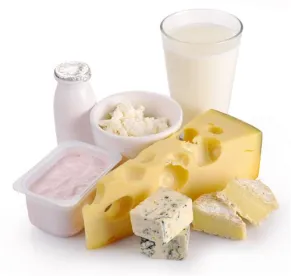The Seventh Circuit recently reversed a district court’s dismissal of a class action false advertising complaint, holding that an ingredient list’s disclosure of components other than parmesan cheese did not foreclose the possibility of reasonable consumers being deceived by a “100% Grated Parmesan Cheese” front label claim. Bell v. Publix Super Markets, Nos. 19-2581 & 19-2741 (7th Cir. Dec 7, 2020).
Defendants, several cheese manufacturers and major food retailers, sell “100% Grated Parmesan Cheese” in shaker tubes. Plaintiffs alleged this claim was deceptive because the products also contain cellulose and potassium sorbate (to prevent caking and mold, respectively). Judge Gary Feinerman of the Northern District of Illinois granted the defendants’ motion to dismiss on two grounds: First, a consumer can easily dispel any ambiguity regarding whether 100% refers to the products being 100% grated, 100% cheese, or 100% parmesan by reading the ingredient list on the back label. And second, common sense dictates the products must contain added ingredients because they are sold unrefrigerated in grocery store aisles, alongside dried pastas and canned sauces.
As noted, the Seventh Circuit rejected that reasoning and reversed. The appellate court pointed to several decisions of other circuits, including Williams v. Gerber, 552 F.3d 934 (9th Cir. 2008), that found a defendant could not immunize itself against prominent, misleading front-label claims by disclosing the truth about a product’s ingredients on the back label. The Court feared that following the district court’s so-called “ambiguity rule”—that an advertiser can clear up an ambiguous front label via its back label—would encourage deceptive labeling. In addition, the Seventh Circuit disagreed that common sense rendered plaintiffs’ interpretation of the product labels unreasonable, as pure grated parmesan cheese can be shelf-stable for a long time without refrigeration.
Further, plaintiffs alleged they conducted consumer surveys showing 85 to 95 percent of consumers understood “100% Grated Parmesan Cheese” to mean the product contains only cheese, without additives. The Court saw no reason not to accept those allegations as true at the motion to dismiss stage, noting that it would not be surprising if “many grocery shoppers make quick decisions that do not involve careful consideration of all information available to them.” As a result, the Seventh Circuit concluded that “[h]ow reasonable consumers actually understand defendants’ ‘100% Grated Parmesan Cheese’ labels is a question of fact that cannot be resolved on the pleadings.”
We anticipate Bell will quickly join Williams among the false advertising decisions most frequently cited by the plaintiffs’ bar. But while Bell surely is a setback for “100% Grated Parmesan Cheese” sellers, it will not change the status quo that it is both common and entirely appropriate for courts to dismiss as a matter of law complaints alleging unreasonable interpretations of front-of-the-package labeling and other advertising. There are many decisions recognizing this principle, including several recent and notable decisions from the Second and Ninth Circuits:
-
In Fink v. Time Warner, the Second Circuit affirmed the dismissal of plaintiffs’ false advertising complaint, acknowledging that it is “well settled that a court may determine as a matter of law that an allegedly deceptive advertisement would not have misled a reasonable consumer,” and that “the presence of a disclaimer or similar clarifying language may defeat a claim of deception.” 714 F.3d 739, 741-42 (2d Cir. 2013).
-
In Jessani v. Monini North America, the Second Circuit affirmed the dismissal with prejudice of plaintiffs’ complaint alleging that reasonable consumers would take away the false message that a flavored olive oil truthfully described as “truffle flavored” contains real truffles. 744 F. App’x 18 (2d Cir. 2018). The Court agreed with Monini, who Proskauer represented, that this was simply not a reasonable takeaway in the overall context of its label, and given the absence of truffles on the ingredient list.
-
In Ebner v. Fresh, the Ninth Circuit explained that Williams merely “stands for the proposition that if the defendant commits an act of deception, the presence of fine print revealing the truth is insufficient to dispel that deception.” 838 F.3d 958, 966 (9th Cir. 2016) (emphasis in original). In Ebner, the Ninth Circuit found it was not plausible that reasonable consumers would be deceived as to how much lip balm the defendant’s product contained where the label accurately stated its net weight.
-
In Becerra v. Dr. Pepper/Seven Up, the Ninth Circuit affirmed the district court’s conclusion that no reasonable consumer would assume that “diet” on a Dr. Pepper soft drink promises weight loss or management, notwithstanding plaintiffs’ allegations that a consumer survey showed otherwise. 945 F.3d 1225 (9th Cir. 2019).
-
In Razo v. Ashley Furniture Industries, the Ninth Circuit held that the “district court properly granted summary judgment on Razo’s claims because a reasonable consumer would have read the unambiguous and truthful disclosures placed on the front and back of Ashley’s DuraBlend hangtag.” 782 Fed. Appx. 632, 633 (9th Cir. 2019).
Nothing in Bell suggests that the Seventh Circuit intended to deviate from this established law. Bell merely stands for the same proposition the Ninth Circuit recognized years ago in Williams: advertisers cannot immunize themselves from the consequences of front label false advertising with a “gotcha” disclaimer on the back. On the other hand, “deceptive advertising claims should take into account all the information available to consumers and the context in which that information is provided and used,” and “where plaintiffs base deceptive advertising claims on unreasonable or fanciful interpretations of labels or other advertising, dismissal on the pleadings may well be justified.” Bell at 10.





 />i
/>i

